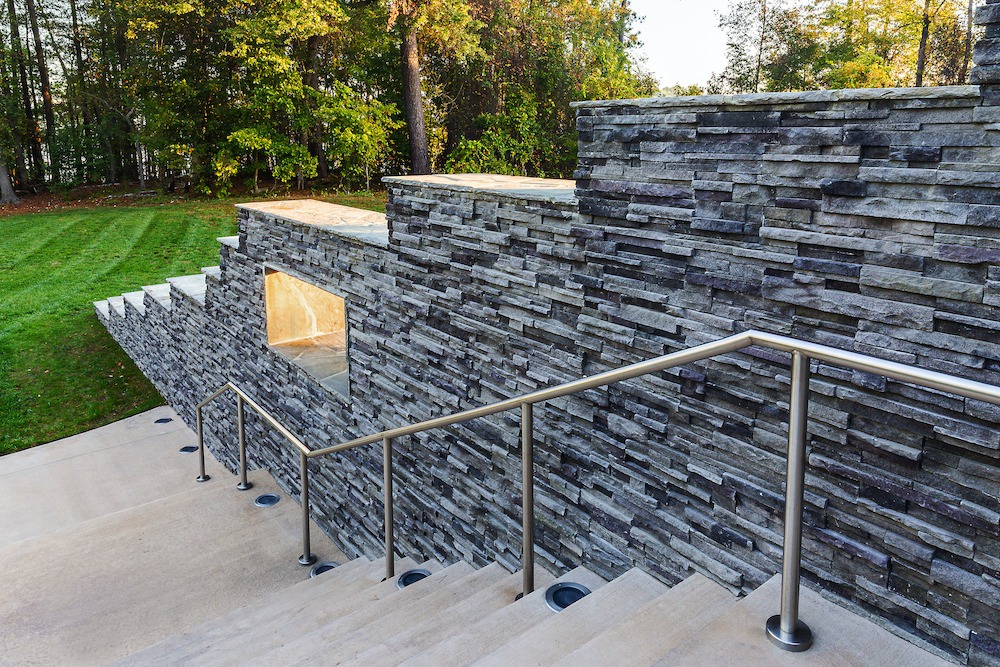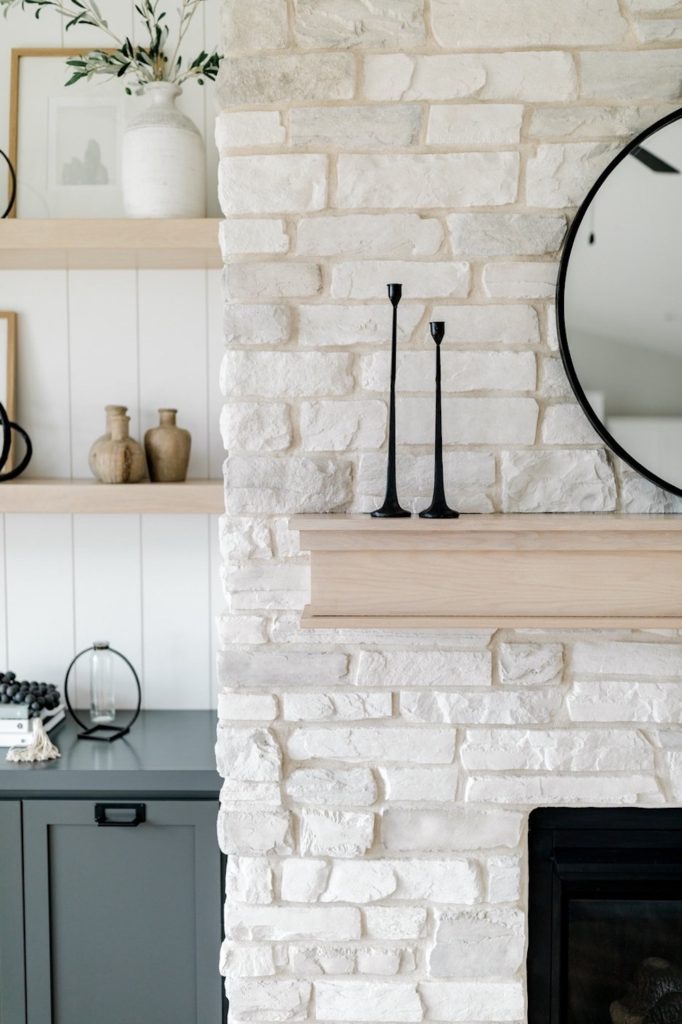Looking Beautiful Still: Maintaining Stone and Brick Veneer
Words: Joanne Anderson, Chris Hines, David Peters
Words: Joanne M. Anderson
Photos: Boral Stone, Garrett Aitken
Among the many advantages of building exteriors with brick and stone veneers are timeless beauty, sustainability, energy efficiency, durability, and fire resistance. While it may seem like we spend a lifetime accumulating things, there is probably more time spent in taking care of whatever we manage to acquire. The appeal of brick and stone, over wood and vinyl siding, is the relatively low maintenance across decades, longevity and reliable performance across centuries.
While general upkeep may be low and even a once-a-year kind of event, it must be done to protect the material, which in turn helps preserve the structural integrity of any edifice. “One of the benefits of masonry in general, and manufactured stone specifically, is that it has remarkably low maintenance requirements,” states Chris Hines, DevTech Leader at Boral Stone Division. “Although the mason has the challenge of cleaning up the mortar mess during installation, afterward it generally requires nothing more than regular cleaning to remove dust, dirt, and organic matter.”
Boral Limited has secured an international presence in construction materials since incorporating in 1960. Headquartered in Sydney, Australia, the U.S. office is in Atlanta, home to the busiest airport in the country. Close to or more than 104 million passengers travel through Hartsfield-Jackson Atlanta International Airport, including surely a few Boral reps, stockholders, and executives.
David Peters, Director of Technical Services at Meridian® Brick and Masonry Supply, echoes Hines when addressing brick: “The beauty of clay brick, full or thin veneer, is that there is virtually no maintenance to the brick itself when installed correctly. Now, depending on the location of the masonry veneer and the elements the veneer is exposed to, additional upkeep may be necessary to keep your wall system performing to its best ability.”
 StateView Hotel, Raleigh, NC
StateView Hotel, Raleigh, NC
Meridian® Brick is headquartered in Dogwood City, aka the Empire City of the South, aka Hotlanta, aka Atlanta, capital of the Peach State of Georgia. Boasting more than 1.1 billion bricks produced, more than 155,000 orders, and 2.7 million and counting of hours worked without injury, Meridian® Brick’s culture “celebrates a rich legacy of brick-making expertise combined with a spirit of continuous improvement and innovation.” [www.meridianbrick.com]
Maintenance Overview
All masonry should be inspected and photographed annually, with a keen eye toward:
- moss and plant growth
- mildew and mold
- dirt and grime from splashing
- efflorescence
- mortar joints and grout still solid
- gutters and downspouts clear and functional
- caulking and seals watertight
- seal deterioration (if sealed)
- cracked brick or stone
- sprinkler heads facing away from façade
- minimal splash hitting the surface from anywhere
- inside or behind the wall for moisture leakage potential
Photo documentation is always a great idea for any record of maintenance, as well as warranty issues. Pair that with the list of what was checked and done, so others can see what has been addressed, what to look for, and perhaps how any structural integrity was resolved. Of course, it also is a log of what perhaps was not done or looked at closely, so the checklist is handy to place in the file.
“If your product is in a shaded area, there is a possibility of mold or organic growth on the exterior of the brick veneer,” Peters states. “Should this happen, after putting on appropriate PPE, a bleach solution can be used (one cup mixed with one gallon of water). Start by rinsing the surface completely with water, then gently scrub the surface with the bleach solution using a synthetic or natural brush. Lastly, rinse the surface completely to ensure all of the bleach solutions are rinsed off.”
One common misconception about brick is that it can be or even should be routinely power-washed. “Neither full brick nor thin brick veneer should ever be pressure washed to clean the face of it,” Peters continues. “While pressure washing works great for driveways, it can damage the face of your brick and lead to cracking in the mortar, along with potentially driving water behind the wall. When washing down the brick, it is recommended to use a garden hose between 100 and 400 psi, from a distance of at least 12 inches away from the wall.”
Hines concurs with never power-washing bricks and adds avoiding chemical cleaners as well. “Power washing can cause immediate erosion damage and impact long-term durability and color,” he explains. “Never use an acid or acidic cleaner on stone either, as it can cause permanent discoloration. Always test any cleaning solution in a small, inconspicuous area before general application. Additionally, avoid metal brushes for cleaning manufactured stone veneer, and instead stick with natural or nylon fibers.”
Hines also suggests that when landscaping is planted or redesigned that it is placed with sufficient clearance to prevent covering stone, moisture-wicking, and bug trails. Shrubs can grow as wide as tall, and this is often overlooked when putting a 5-inch tall, 3-inch wide, little bush into the ground near the foundation. Peters recommends laying straw or landscaping mesh before anything is planted to alleviate mud from splashing up and staining brick or stone.
Pros and Cons for Protective Coatings

Taking care of many things like great hiking boots and outdoor cushions may involve applying a protective coating of some sort to reduce moisture seepage and enhance longevity and performance. Brick and stone, however, may not need or perform well with coatings as they are porous products that imperceptibly swell and shrink as humidity varies. Exterior brick and stone veneer installed correctly, checked and maintained annually, should do very well without any coating. In fact, painting or coating masonry products exponentially increases the maintenance process.
“Exterior thin brick does not need to be sealed and is not recommended,” declares Peters. “Interior thin brick should be sealed if the brick is expected to come into contact with grease or food. For thin brick used in a backsplash application, for example, there is a probability grease and food will come in contact with the brick veneer. Ensuring the brick is sealed properly will be key in preventing grease or food from absorbing into the face of the product. Should residue get on the thin veneer, a damp cloth can be used to wipe off the face of the brick.”
Hines addresses brick surrounds for fireplaces. “Interior fireplace applications often become stained with smoke, but they can be protected in advance with a sealer to make this area easier to clean. Before application, always check with the manufacturer to confirm that a sealer won’t void a warranty.” Coatings and sealants can peel, chip, and strip away your perceived defense against moisture penetration and should be checked more often than once a year.
“Use of a protective treatment,” Hines continues, “may prolong the life of the stone and make it easier to clean, but they do come with some risk. Typically, you’d use a ‘breathable’ silane/siloxane sealer/waterproofing product for this sort of treatment, but you should also consider checking with the stone manufacturer for a more specific recommendation. While a protective treatment is not required, it can make the stone easier to clean.”
In general, brick and stone veneers are uncomplicated to keep pristine and can be cleaned with simple detergent and water, then rinsed well with fresh water. As the years tick by, these attractive, sustainable exteriors will stay looking beautiful still.
Joanne M. Anderson is a SW Virginia-based freelance writer and frequent contributor to Masonry Magazine. A native of southern Vermont, she is especially enamored with marble and slate for the quarries she played near as a kid.